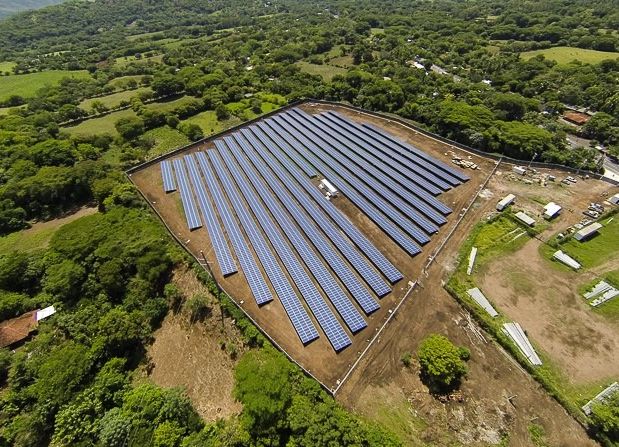Asset-backed securities, such as the one just offered by AES Distributed Energy, are a source of low-cost capital for solar project development. And low-cost capital is the lifeblood of solar projects and solar market growth.
As (expensive) tax equity funding for solar fades in the looming shift of the federal Investment Tax Credit, new classes of financing are going to emerge -- and asset-backed securities (ABS) is one of them. (Securitization is the practice of pooling various sources of debt and selling it as a package to investors on the secondary market.)
Distributed solar power entered the world of securitization when SolarCity offered a private placement of $54.4 million in 2013. This week's AES securitization is now the fifth solar ABS, with three from SolarCity and one from Sunrun, for a total of $560.5 million. The AES deal aggregates a portfolio of 15 projects totaling 43 megawatts of municipal, commercial and residential leases and power-purchase agreements.
AES Distributed Energy was formed earlier this year when AES acquired Main Street Power, a developer of distributed solar projects in the 300-kilowatt to 5-megawatt range. The acquisition followed Duke's stake in REC and Coronal's acquisition of Heliosage, highlighting the trend of utilities and financiers acquiring developers. Morgan Stanley, which finances AES Distributed Energy through a subsidiary, is underwriting the deal.
AES called this securitization "the first deal backed by solar assets to be sponsored by a utility company." Sunrun and SolarCity are one thing -- but a solar ABS from a $17 billion annual revenue power company lends a new level of credibility to this capital-raising tool. AES owns operating power generation resources of more than 35 gigawatts, including 8 gigawatts of renewable generation.
We spoke with Chris Shelton, VP for New Energy Solutions at AES, last week. He noted that AES operates in a lot of markets around the world where power prices are higher and the insolation is substantial. He said, "We don't take the view that incentives in the medium term are necessary across these markets. They are not." Shelton noted in a previous interview, "While the U.S. opportunity is interesting, for AES, it's exciting to think of our other markets as well."
Shelton said that the Main Street Power acquisition gave AES "solid core capability" across six strategic units at AES, with some projects already built in El Salvador, and others under development in the Dominican Republic and Mexico. Shelton said that U.S. distributed generation would be driven by a "dual mandate of sustainability and resiliency for the enterprise."
"If a progressive U.S. company wants a sustainability initiative across a number of its factories, we can serve that enterprise with a comprehensive touch across several countries." Shelton said that storage would be a part of these projects if it bolstered the project economics.
AES serves over 80 percent of El Salvador with its distribution network and currently has over 65 megawatts of distributed PV generation in operation across North America.
A source close to the AES deal suggested that "as more issuers like AES come to the table, we're going to start to see companies with much greater balance sheets create a much larger issuance pool." The source envisioned a virtuous cycle in solar ABS as now occurs in the auto market, where investors have become comfortable with the "clean, simple stories and recovery rates" and where "every other [ABS] deal is an auto deal or auto lease" from "Honda or Mercedes-Benz."
The source also predicts that the ratings of securitized solar will rise to A+ and AA, and that folks "such as Pacific Life and CalPERS will want to get in on this paper."
Distributed solar is finally reaching the scale and level of familiarity where it can access massive pools of once-unavailable lower-cost capital. It's another piece of the equation where solar is cutting costs and becoming more competitive. This deal could open up the emerging solar ABS landscape.
Photo: A 2.5-megawatt ground-mount PV project in El Salvador

Source: AES
(GTM published "The Encyclopedia of Solar Securitization" last year. Here's Part 1 and Part 2.)



